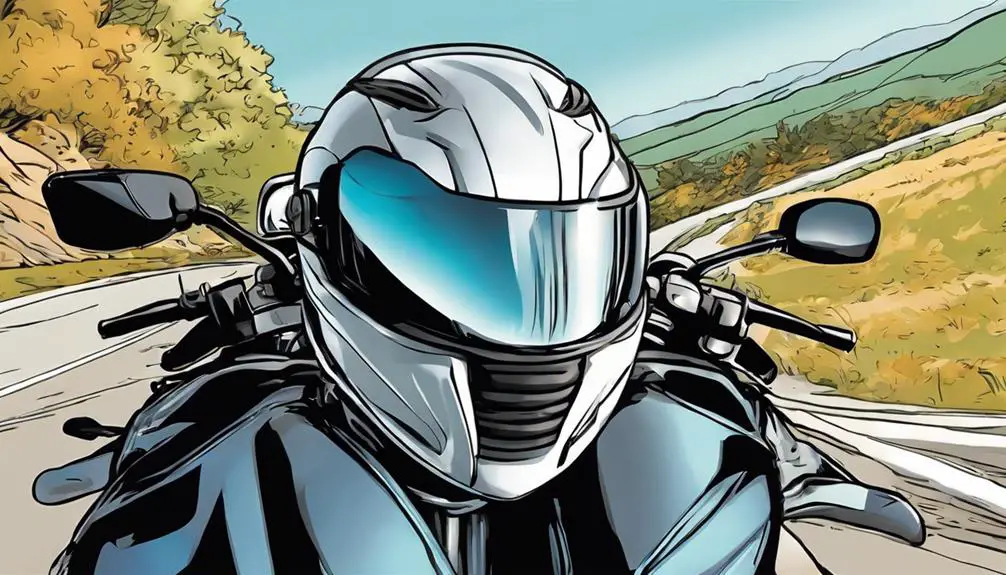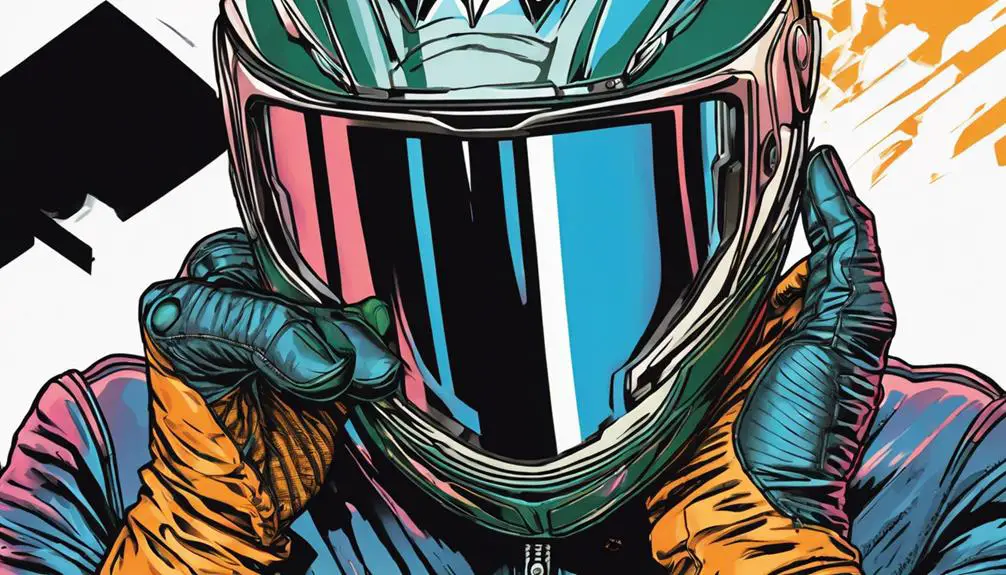You might think that motorcycle safety concerns are exaggerated, but the reality is that a few simple adjustments can greatly enhance your safety on the road. By focusing on visibility, regular maintenance, and situational awareness, you can address potential risks effectively. These strategies not only protect you but also contribute to a more enjoyable ride. So, what are the specific steps you can take to implement these tips and guarantee a safer experience each time you hit the road?
Quick Takeaways
- Always wear a DOT-approved helmet and appropriate protective gear to minimize injury risk during accidents.
- Regularly inspect and maintain your motorcycle, focusing on tires, brakes, and oil levels for optimal performance.
- Stay alert to your surroundings, watching for road hazards, distracted drivers, and changing weather conditions.
- Use bright colors and reflective materials in your clothing to enhance visibility to other motorists, especially at night.
Understand Common Safety Issues

To ride safely, it's crucial to recognize the common safety issues that motorcyclists face on the road.
One major concern is visibility; many drivers simply don't see you. Wearing bright colors and using reflective gear can help you stand out.
Another issue is road hazards. Potholes, debris, and wet surfaces can pose serious threats, so always stay alert and ready to maneuver.
You also need to be aware of your surroundings. Distracted drivers are everywhere, and they can change lanes or make sudden stops without warning. Keep your distance and don't assume they'll see you.
Weather conditions are another factor; rain or strong winds can drastically affect your control. Adjust your riding style accordingly, and know when it's best to stay off the road.
Regular Maintenance Practices
Regularly maintaining your motorcycle is essential for guaranteeing both your safety and the bike's performance on the road. A well-maintained bike not only runs smoother but also enhances your riding experience, giving you the freedom to explore without worry.
Start by checking the tire pressure and tread regularly; underinflated or worn tires can lead to dangerous situations.
Next, inspect your brakes. Verify that both the front and rear brakes are responsive. If you feel any hesitation or hear unusual sounds, it might be time for a check-up.
Don't forget to change the oil and replace the oil filter as recommended in your owner's manual; this keeps your engine running efficiently.
Pay attention to the chain, too. Regularly clean, lubricate, and adjust it to avoid premature wear.
Invest in Safety Gear

Investing in high-quality safety gear is essential for protecting yourself on the road and enhancing your overall riding experience. When you gear up, you're not just putting on armor; you're embracing freedom with confidence.
A sturdy helmet should be your first purchase—look for one that meets safety standards and offers a snug fit. It's your first line of defense against potential impacts.
Next, consider protective jackets and pants made from abrasion-resistant materials. These items can greatly reduce injury in case of a fall. Don't forget about gloves; they'll give you better grip and protect your hands from the elements and injuries.
Boots are just as important—make sure they cover your ankles and have non-slip soles. The right footwear keeps you steady and secure when you're maneuvering through the twists and turns of the open road.
Lastly, invest in reflective gear or accessories to ensure you're visible, especially during low-light conditions. Safety gear isn't just about protection; it's about enabling your passion for riding with peace of mind.
Common Questions
How Can I Improve My Riding Skills for Better Safety?
You can improve your riding skills by practicing regularly in different conditions.
Join a local riding group or take advanced courses to learn new techniques and enhance your confidence.
Focus on your body positioning and throttle control, and always scan your surroundings for potential hazards.
Don't forget to ride defensively, anticipating the actions of other road users.
What Are the Legal Requirements for Motorcycle Insurance?
When it comes to motorcycle insurance, you gotta know the legal ropes. Most states require liability coverage, which protects you against damages to others in an accident.
Some places may also mandate personal injury protection or uninsured motorist coverage. Don't forget to check your state's specific requirements; it's better to be safe than sorry.
Riding free is great, but make sure you've got the right insurance to keep your journey smooth.
How Do Weather Conditions Affect Motorcycle Safety?
Weather conditions play a huge role in your motorcycle safety.
When it rains, roads can become slippery, increasing your chances of losing control.
Windy days can push you off balance, making it tougher to steer.
Cold temperatures may reduce your grip, while fog can limit visibility.
Always check the forecast before hitting the road, and adjust your riding style to stay safe.
Embrace the freedom of the ride, but stay aware of the elements!
What Should I Do After a Minor Motorcycle Accident?
After a minor motorcycle accident, you might feel a rush of adrenaline, like a scene from an action movie where the hero rises again.
First, check yourself for injuries; your well-being's essential. If you're okay, assess your bike and the situation.
Exchange information with the other party and document everything. Don't forget to notify your insurance.
Embrace the spirit of freedom and resilience—this setback won't define your journey. Keep riding!
How Can I Choose a Safe Route for My Rides?
When choosing a safe route for your rides, start by exploring roads with lighter traffic and good visibility.
Avoid routes with sharp turns or potholes that could catch you off guard.
Use apps or maps to check for construction or known hazards.
Prioritize well-maintained roads and those with dedicated motorcycle lanes if possible.
Trust your instincts, and don't hesitate to turn back if you feel uneasy about a particular area.
Wrapping Up
By prioritizing visibility, maintaining your bike, and investing in safety gear, you can navigate the roads like a seasoned pro.
Just as a lighthouse guides ships through stormy seas, your proactive approach to motorcycle safety can illuminate the path ahead, helping you avoid potential dangers.
Remember, staying alert and prepared not only protects you but also enhances your riding experience.
So gear up, stay aware, and enjoy the ride with confidence!